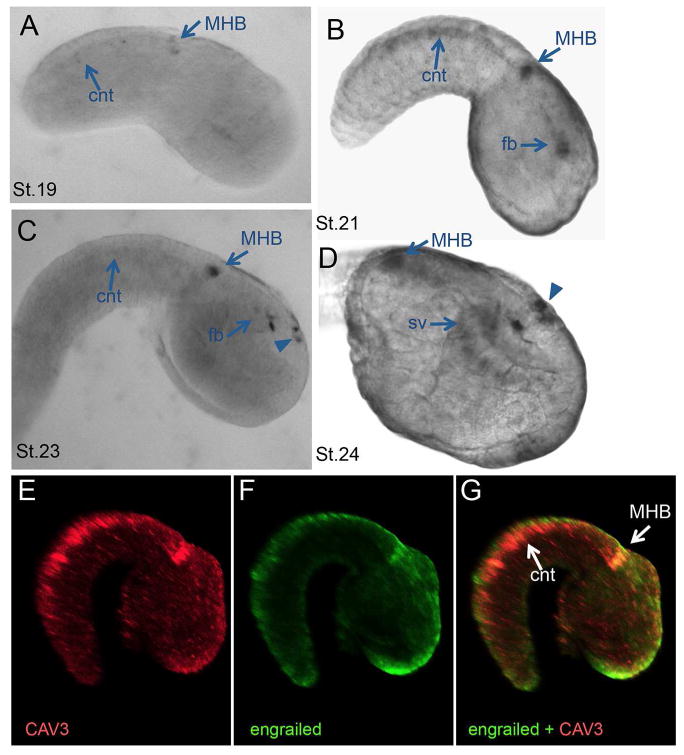Figure 5.
Calcium (Ca2+) transients in the neural tubes of C.savignyi and X. laevis. A–A″. Xenopus embryo injected with GCaMP3 RNA shows Ca2+ transients during neurulation. Top left, a late neurula embryo expressing GCaMP3 in the closing neural tube (A). Low magnification view of X. laevis embryo showing typical area recorded for Ca2+ transients (yellow box). Anterior is up. A′, High magnification of the Z plane of the X. laevis anterior neural plate that was imaged. A″. GCaMP fluorescence for a single cell in the neural plate undergoing a Ca2+ transient ([Ca2+] indicated by color scale). See also Movies S3 and S4. B. CAV3.2 morpholino knockdown (CAV3.2-MO1, CAV) reduces the number of cells in the neural tube displaying Ca2+ transients, the length and amplitude of the transients, but not the frequency. The y-axis in the amplitude graph shows relative fluorescent intensity (see Materials and Methods). The frequency values are also described in Materials and Methods. Control embryos were injected with a non-specific MO (CTL-MO2, CTL). Data represent quantification of three embryos from three independent experiments and error bars represent standard error of the mean (*= p<0.05). C. Typical Ca2+ transients in CAV-MO knockdown and CTL-MO X. laevis neural tube cells. D. Ca2+ transients in C. savignyi embryos detected with GCaMP3 expressed from the pan-neural ETR1 promoter. Top panel shows one frame from a time-lapse movie. Lower panel is a close up of the midbrain hindbrain region (yellow box in top panel) showing a single Ca2+ transient with fluorescence intensity using the color scale from A″. See also Movie S5. E. Time-lapse of Ca2+ transients in the C. savignyi MHB region. Representative images from two time points (neurula and mid-tailbud) of an embryo expressing GCaMP3 with the MHB region of interest (ROI) outlined in yellow. Dashed white lines outline the embryo. Bottom panels show relative fluorescence intensity in the ROI over time. Neu-iTB = neurula to initial tailbud and ETB-MTB = early to mid tailbud.

